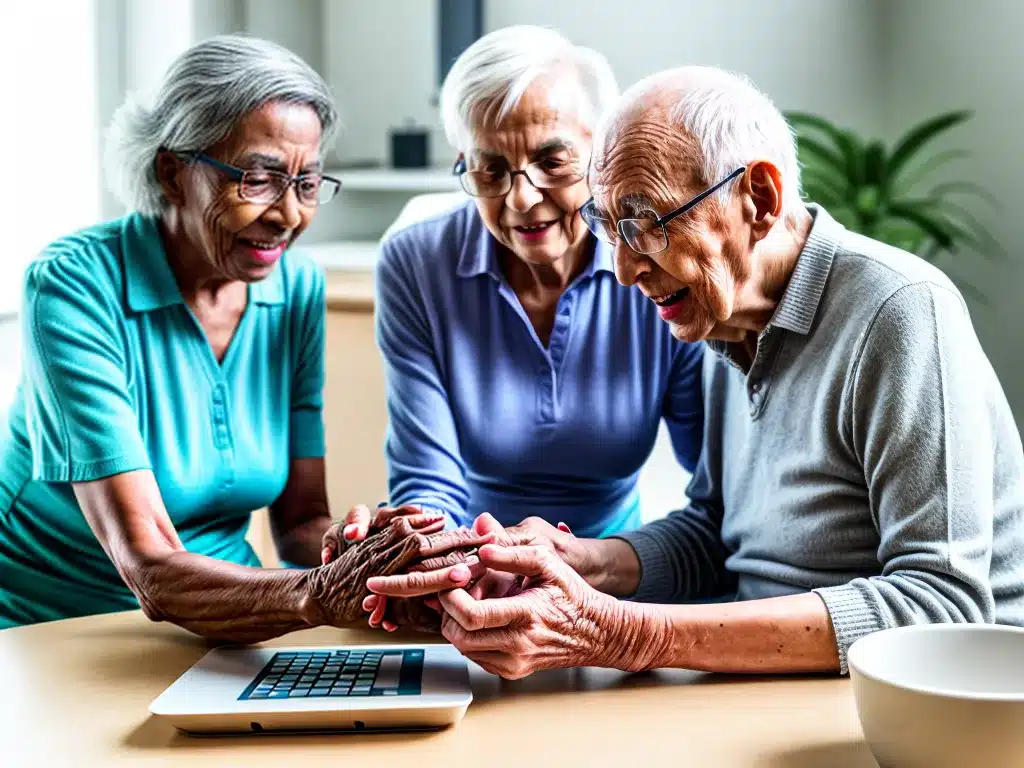
Transforming Elder Care with IoT Monitoring Solutions
Introduction
The Internet of Things (IoT) is transforming elder care by enabling new types of monitoring and assistance solutions. As the global population ages, IoT technologies provide innovative ways to support independent living, safety, health management, and quality of life for older adults. In this article, I will provide an in-depth look at how IoT is changing elder care.
Enabling Independent Living
One of the biggest benefits of IoT for elder care is supporting independent living. IoT monitoring solutions allow seniors to age in place comfortably and safely. Here are some examples of IoT technologies that promote independence:
Smart Home Sensors
-
IoT sensors can detect motion, open/closed doors and cabinets, appliance usage, and other activity patterns within the home. This allows caregivers to monitor daily routines unobtrusively. Abnormal activity alerts may signify an emerging health issue.
-
Environmental sensors can track room temperature, light levels, and humidity to help ensure a comfortable environment. Seniors with chronic illnesses often require specific conditions.
-
Voice assistants like Amazon Alexa allow hands-free control of home devices and systems. This enables mobility-impaired seniors to adjust lighting, thermostat, entertainment, etc. with voice commands.
Wearable Medical Devices
-
Wearable patches can remotely monitor vital signs like blood pressure, heart rate, blood oxygen saturation, respiration rate, and skin temperature. This provides continuous insight into overall wellbeing.
-
Smart medication dispensers can automatically alert seniors when it’s time to take prescribed medications and confirm doses are taken. This improves medication adherence.
-
Fall detection sensors like smart watches or pendants can automatically alert caregivers and emergency services if a fall is detected, providing rapid assistance.
Telehealth and mHealth Apps
-
Seniors can use tablets or smartphones to access telehealth apps that allow remote doctor visits, vital sign monitoring, and more to make medical care convenient.
-
mHealth apps can promote healthy habits through medication reminders, exercise trackers, digital cognitive games, and more to support successful aging.
Ensuring Safety and Security
IoT devices also enhance safety and security for older adults living independently. Intelligent monitoring provides protection without impinging on privacy and freedom.
Home Security Systems
-
Smart door locks, security cameras, motion sensors, and alarm systems can all be monitored remotely by caregivers or security providers to ensure safety.
-
Abnormal activity triggers real-time alerts of potential home intrusions or unsafe behaviors like cooking without turning off the stove.
Location Tracking
-
GPS tracking devices or smart watches allow caregivers to monitor a senior’s location unobtrusively when they are outside the home.
-
Geofencing set up through home security systems can send alerts if a senior with dementia wanders beyond a safe geographic area.
Advanced Traits Monitoring
-
Artificial intelligence applied to smart home sensors and mHealth apps can learn seniors’ normal routines and detect concerning deviations in activity patterns, gait, sleep cycles, social engagement, and more.
-
Anomaly detection alerts caregivers to signs of potential health threats like infections, falls risk, cognitive issues, and depression before they escalate.
Supporting Health Management
IoT healthcare solutions enable better chronic disease management, coordinated care, and aging in place:
Remote Patient Monitoring
-
Doctors can track key health indicators using data from connected medical devices and mHealth apps, allowing issues to be caught early before hospitalization is needed.
-
This reduces ER visits and admissions, and enables rapid adjustment of medications and care plans when changes occur.
Improved Medication Adherence
- Smart medication dispensers with tracking and reminder alerts significantly improve adherence. This reduces risk of exacerbations and complications.
Care Coordination Platforms
-
Cloud-based platforms allow health providers, caregivers, and family members to access senior health data securely and get notified of changes that may warrant intervention.
-
This coordinates care across health, home care, and social services to maximize quality of life.
Enhancing Quality of Life
IoT solutions also aim to enhance seniors’ health, social connections, and engagement:
Chronic Disease Lifestyle Management
- mHealth apps can empower seniors to take an active role in managing chronic diseases, through education, digital cognitive training, exercise/nutrition tracking, and medication management.
Reduced Isolation and Depression
- Video chat devices and social networking features in smart devices/TVs allow seniors to stay connected with loved ones and reduce risks of isolation and loneliness.
Smart Home Leisure Activities
- Voice control of TV, music, and smart devices allows mentally/physically impaired seniors to continue beloved hobbies and entertainments. This maintains quality of life and enjoyment.
Conclusion
In summary, IoT technologies are transforming elder care by enabling sophisticated safety and wellbeing monitoring within the home. This allows seniors to maintain independence and privacy while getting needed support from caregivers and health providers. IoT solutions aim to maximize health, safety and quality of life for the growing aging population. Key benefits include fostering independent living, ensuring security, managing health, and enhancing engagement. The future looks bright for integrating smart tech more deeply into elder care.












